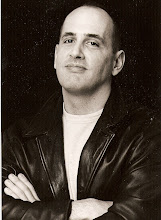As DWTS starts its 10th season Monday Night, I'm not going to be watching. I wrote up a short piece as to my thoughts on the show. Enjoy (and hey, catch up on your reading...that's what I'm gonna do).
How Dancing with the Stars Twisted Its Ankle, by David Toussaint...
The success of “Dancing with the Stars” rests in its perfectly balanced title. TV audiences love to watch professional dancers, and they love to watch stars. Combining the two was genius. I first checked out the show in 2007, the season that Marie Osmond fainted, and was instantly hooked. Watching Donny’s famous sister dance as a wind-up doll wasn’t why I kept coming back, and I never would have tuned in to a show in which Susan Lucci read poetry or Mario Lopez debated global warming. The dancers rooted the storyline, and served as the straight man to their celebrity partner’s frequent pratfalls, sometimes glorious triumphs.
In the few years since, the show has lost its equal footing. The ratings are still great (DWTS has always been a top ten hit), but the fun factor’s slipped. Part of the problem was inevitable: Since the program features many of the same dancers each season, after five years those dancers are more recognizable than half the “stars.” Cheryl Burke, Mark Ballas, and Derek Hough, just to name a few, are famous in their own right, and it’s embarrassing to watch them play second banana to a former “Maxim” model.
The other problem feeds the first: DWTS is no longer about “stars”; it’s about celebrity and popularity. Viewers’ votes count for half the scores, and while that’s necessary for ratings and surprise, it’s become a joke. With few exceptions, most notably Brooke Burke, Season 8’s winner (DWTS is on twice a year, hence the disparity between seasons and years aired), the best dancers now just get bumped off early or lose to whoever’s got a stronger text-coordinated voting drive.
Last season we saw Mya lose to Donny Osmond; before that Gilles Marini lost to gymnast Shawn Johnson. Gilles and Mya could have careers as dancers, while Donny and Shawn were adorable fan favorites. I missed Emmitt Smith’s win over Mario Lopez, but I don’t think I have to remind you which of the two went on to star in “A Chorus Line” on Broadway. Other exceptional dancer-stars, like Sabrina Bryan in 2007, got voted off early for no apparent reason other than that viewers were annoyed by their personalities, or talent.
The three judges could help matters by scoring every star equally, not on the “most improved” rating scale they too frequently practice. To avoid the endless, discussion-board arguments over dance training, the producers should set a firm, stated rule as to how much experience stars are allowed. Last year, Executive Producer Conrad Green said he’d welcome Paula Abdul as a guest, despite her long career as a dancer/choreographer. He cited her lack of ballroom training as sufficient. By that standard, Mikhail Baryshnikov would be eligible. (When former “Hairspray” star Marissa Jaret Winokur competed, no one questioned her Tony Award-winning turn as an overweight girl who’s such a fantastic dancer she makes it big on a local dance program.)
There’s a marked difference between a star and a celebrity, and the latter approach is a turn off, literally. While I’m not expecting Streisand or Streep to take guest spins, half the “stars” are famous for either modeling topless (Burke and last season’s Joanna Krupa), their own reality TV shows (rejected bachelorette Melissa Rycroft), or scandal (indicted Former House Majority Leader Tom DeLay’s appearance was shameless).
They do have other resources: This past summer I interviewed Olympic champion Greg Louganis about his tireless, and highly publicized, efforts to appear on the program. Despite five gold medals and two books, the Greatest Diver in the World has been turned down repeatedly. The openly gay athlete has been told that he has either “too much dance experience,” or not enough “star power.” Apparently, Winokur didn’t suffer either one of those problems. Since Lance Bass, the only openly gay star to appear on the show, surfaced right after gay rights groups complained that the program discriminated against out dancers, I suspect that DeLay’s appearance wasn’t the first political choice.
Rejected Star: Not Enough Fame.
Season Ten, which premieres on March 22, pairs Shannen Doherty, Pamela Anderson, and Buzz Aldrin as real stars amid a lot of people you need wouldn’t notice unless you bumped into them on Dmitry Chaplin’s arm. Not surprisingly, the biggest attraction this season is realty star crash Kate Gosselin, who’s out-performing even the New Bachelor, Jake Pavelka, in the pre-publicity buzz. (In yet another sad trend, Pavelka and Rycroft were recruited immediately after their respective “Bachelor” shows’ finales, making DWTS seem like just another ABC cross-over marketing ploy.)
DWTS was never intended to be anything more than an exuberant talent contest, and a chance to watch some of your favorite entertainers strut their stuff. What many of us liked about the show was that it was a viable alternative to the mean-spirited themes of “Idol,” “Survivor,” and, yes, Gosselin’s own “Kate Plus 8.” That smart premise has been replaced by online sites that bash contestants and invent rumors about stars made famous because they’re booked, a voting standard that wouldn’t hold up in any middle school, and the inevitable disappointment of knowing that the best dancer you see on March 22 will more than likely be gone before the Mirror Ball trophy finds its winner.
<<<<"DWTS" brightest star.
You're in the book.





No comments:
Post a Comment